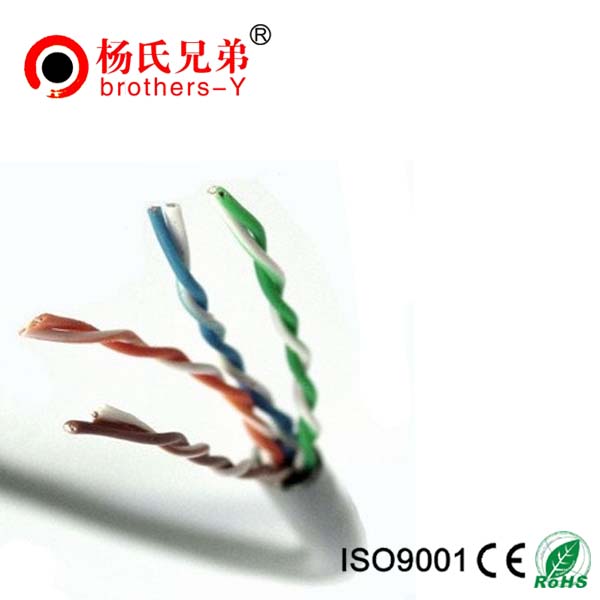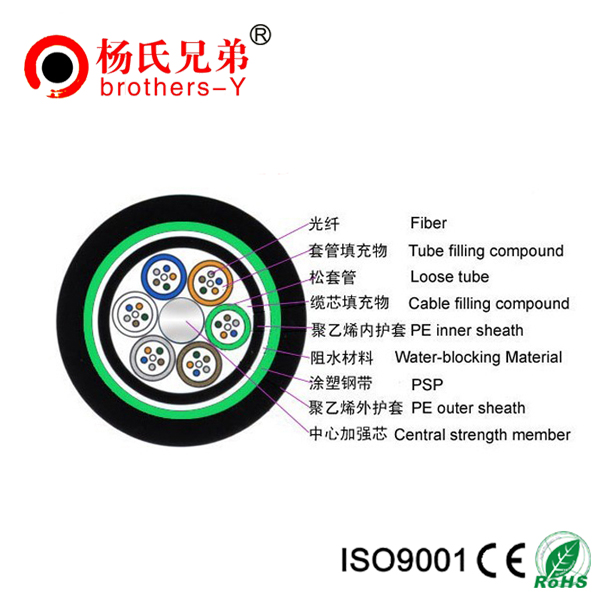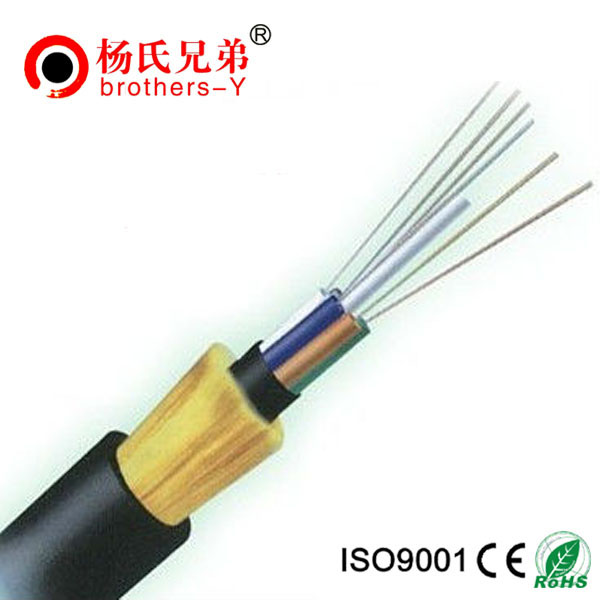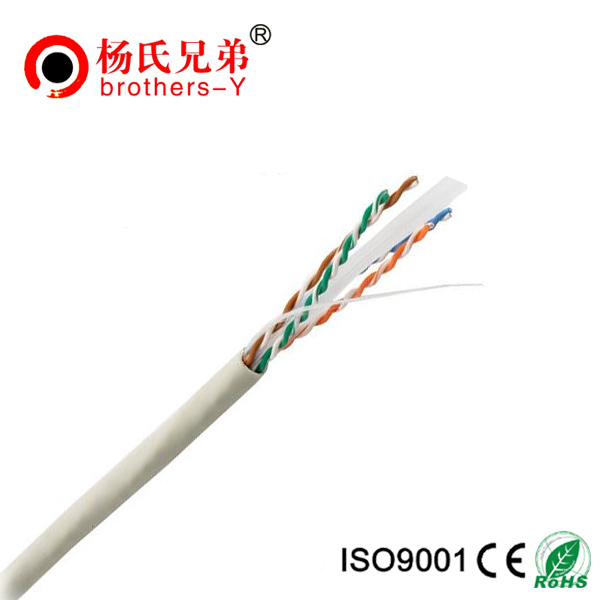Twisted-Pair Cable
Twisted-Pair Cable
In its simplest form, twisted-pair cable consists of two insulated strands of copper wire twisted around each other. Figure 2.12 shows the two types of twisted-pair cable: unshielded twisted-pair (UTP) and shielded twisted-pair (STP)cable.

Figure 2.12 Unshielded twisted-pair and shielded twisted-pair cables
A number of twisted-pair wires are often grouped together and enclosed in a protective sheath to form a cable. The total number of pairs in a cable varies. The twisting cancels out electrical noise from adjacent pairs and from other sources such as motors, relays, and transformers.
Unshielded Twisted-Pair (UTP) Cable
UTP, using the 10BaseT specification, is the most popular type of twisted-pair cable and is fast becoming the most popular LAN cabling. The maximum cable length segment is 100 meters, about 328 feet.
Traditional UTP cable, as shown in Figure 2.13, consists of two insulated copper wires. UTP specifications govern how many twists are permitted per foot of cable; the number of twists allowed depends on the purpose to which the cable will be put. In
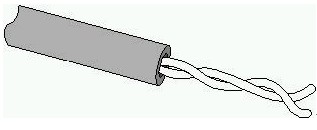
Figure 2.13 UTP cable
The 568A Commercial Building Wiring Standard of the Electronic Industries Association and the Telecommunications Industries Association (EIA/TIA) specifies the type of UTP cable that is to be used in a variety of building and wiring situations. The objective is to ensure consistency of products for customers. These standards include five categories of UTP:
• Category 1 This refers to traditional UTP telephone cable that can carry voice but not data transmissions. Most telephone cable prior to 1983 was Category 1 cable.
• Category 2 This category certifies UTP cable for data transmissions up to 4 megabits per second (Mbps). It consists of four twisted pairs of copper wire.
• Category 3 This category certifies UTP cable for data transmissions up to 16 Mbps. It consists of four twisted pairs of copper wire with three twists per foot.
• Category 4 This category certifies UTP cable for data transmissions up to 20 Mbps. It consists of four twisted pairs of copper wire.
• Category 5 This category certifies UTP cable for data transmissions up to 100 Mbps. It consists of four twisted pairs of copper wire.
Most telephone systems use a type of UTP. In fact, one reason why UTP is so popular is because many buildings are prewired for twisted-pair telephone systems. As part of the prewiring process, extra UTP is often installed to meet future cabling needs. If preinstalled twisted-pair cable is of sufficient grade to support data transmission, it can be used in a computer network. Caution is required, however, because common telephone wire might not have the twisting and other electrical characteristics required for clean, secure, computer data transmission.
One potential problem with all types of cabling is crosstalk. Figure 2.14 shows crosstalk between two UTP cables. (As discussed earlier in this lesson, crosstalk is defined as signals from one line interfering with signals from another line.) UTP is particularly susceptible to crosstalk, but the greater the number of twists per foot of cable, the more effective the protection against crosstalk.
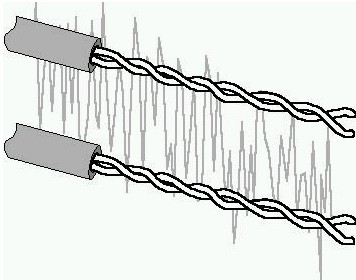
Figure 2.14 Crosstalk occurs when signals from one line bleed into another line
Shielded Twisted-Pair (STP) Cable
STP cable uses a woven copper-braid jacket that is more protective and of a higher quality than the jacket used by UTP. Figure 2.15 shows a two-twisted-pair STP cable. STP also uses a foil wrap around each of the wire pairs. This gives STP excellent shielding to protect the transmitted data from outside interference, which in turn allows it to support higher transmission rates over longer distances than UTP.
![]()
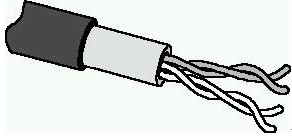
Information about
- Analysis of the Underground Transmission and Distribution Cables Market
- Key Elements for Cable Installation Success
- More details & technology between network cable
- Difference between CAT 5e patch cable and CAT 5e. crossover cable
- RJ45 Colors and Wiring Guide Diagram TIA/EIA 568A/568B
- What Is The Difference Between Cat 5, Cat 5e, and Cat 6 Cable
- CAT 6A shielded systems are becoming the ideal choice for ... 10GBASE-T over copper cabling.
- Analysis of the North American Wire and Cable Materials Market
- How to install additional phone lines?
New Products
Top articles
- Are there any advantages to using Cat 6 cable for computer networking?
- Are there any problems with using patch cables that are less than a foot long? If so, what are they?
- Letter of Invitation for CTICC
- What are some common uses for Cat5e ethernet cable?
- 10 Gigabit Ethernet interconnect solutions: Investigate carefully before choosing
- Mixing CAT 6A shielded cable with CAT 6 UTP or CAT 5e UTP cables isn’t an issue.
- What cable do I use to connect a PC to a DSL or Cable modem?
- Analysis of the Underground Transmission and Distribution Cables Market
- Is there any benefit to using CAT 5e solid conductor cable?
- Mixing CAT 6A shielded cable with CAT 6 UTP or CAT 5e UTP cables isn’t an issue
Latest articles
- 2014 CeBIT Australia
- 2014 CeBIT Germany
- 2014 International CES
- Vietnam Telecomp 2013
- ROHS Certificate For Lan Cable
- CE Certificate For Power Cable
- ROHS Certificate For Power Cable
- UL Certificate For Communication Cable
- Are there any advantages to using Cat 6 cable for computer networking?
- Are there any problems with using patch cables that are less than a foot long? If so, what are they?











